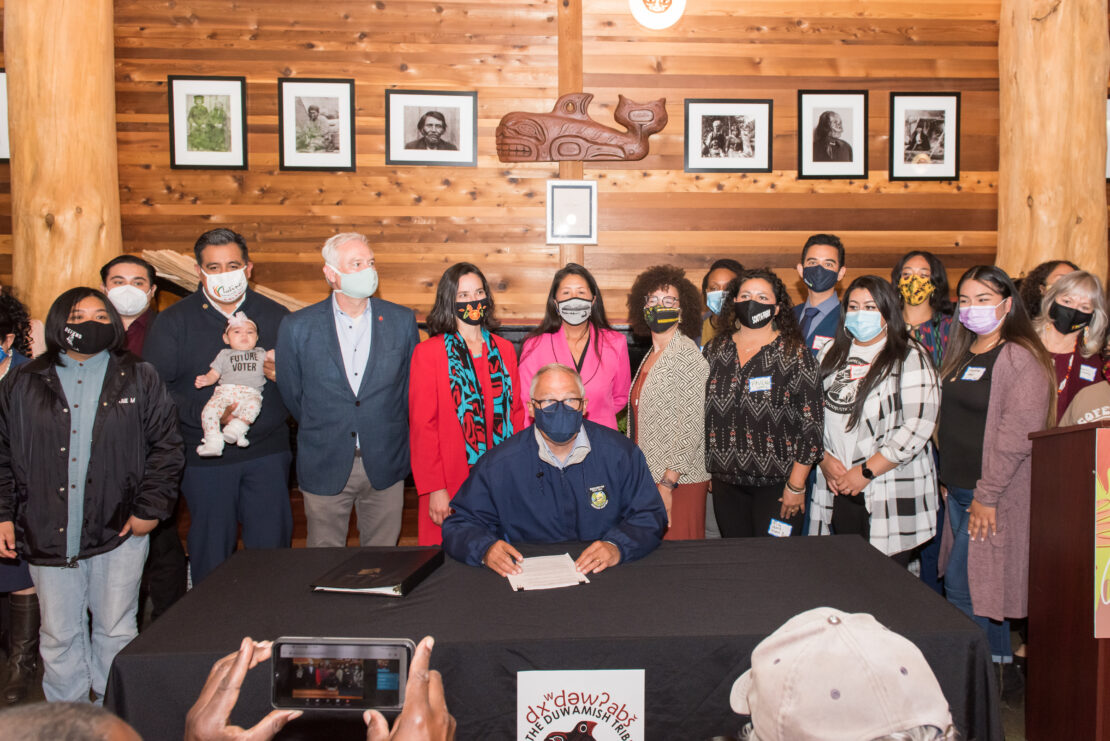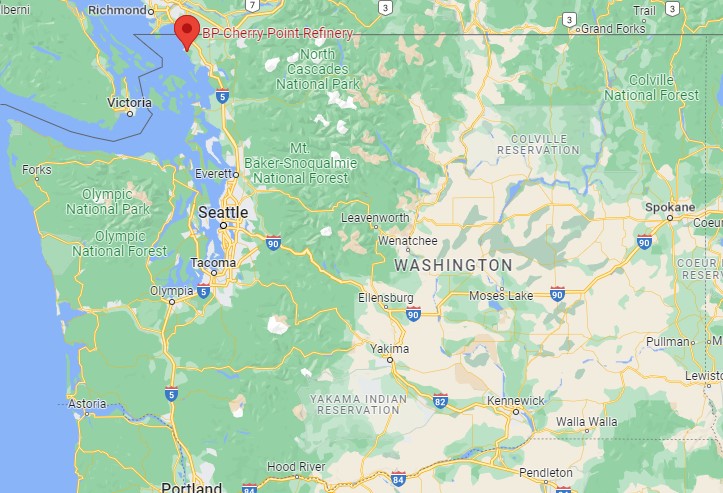The Department of Ecology is looking to place air monitors in “overburdened communities”—a term defined for the first time in the HEAL Act.
Unfortunately, Ecology is proposing a very narrow definition of overburdened that will exclude the very frontline communities that have historically been left behind—communities that we already know are chronically and cumulatively impacted by air pollution.
The first image shows who falls under Ecology’s definition of overburdened. Under this definition, communities next to key sources of greenhouse gas/air pollution, like BP’s Cherry Point Refinery (second image), would not qualify for air monitoring.
Meanwhile, the HEAL Act draws from the Washington Environmental Health Disparities Map to give us a comprehensive definition of overburdened communities, drawing from the communities’ experience and the cumulative impacts of pollution. HEAL is what should drive this work, first and foremost, and all frontline communities deserve appropriate monitoring!
Environmental justice means capturing vulnerabilities, not just a few specific kinds of pollution exposure, in order to create an impact.
Help us tell Ecology that their thresholds for who is overburdened are too narrow and must be reshaped to truly support frontline communities! You have until Thursday, November 10, 11:59pm to submit a comment.
Need help crafting your comment? Use any or all of the language below!
Ecology should take a preventative, precautionary approach when it comes to air monitoring, rather than the exclusionary approach offered:
- the draft air pollution and community indicators are overly narrow and restrictive, insist on the satisfaction of an overly limited multi-factor test, do so without supplying adequate justification of the thresholds established, and exclude vulnerable communities and at-risk populations;
- the department does not provide an alternative pathway to allow consideration of, or identification of, communities who wish to be considered as overburdened for the purposes of Section 3; and
- despite its sound efforts so far, the department’s process for seeking input is still not accessible to the most vulnerable populations and its proposal is not readily understandable to most people.
To improve the department’s draft criteria, we recommend that the department ensure frontline communities can be monitored:
- broaden the default pathway to identify overburdened communities by:
- eliminating the multi-factor requirement that an overburdened community have both an elevated level of criteria air pollutants and exposure to a second category of pollutants;
- lowering the thresholds for non-criteria pollutant exposure, and explaining how the selected thresholds correlate to health factors or desired outcomes; and
- accounting for the environmental harms and cumulative health impacts experienced by vulnerable communities and at-risk populations;
- create an alternative pathway to identify overburdened communities—in addition to the default pathway—one that permits a community to apply or petition for consideration due to its lived experience with pollution, or due to special or unforeseen circumstances;
- expand its efforts to reach affected persons in potentially overburdened communities to incorporate hard-to-reach perspectives and input that could affect decisions about identifying an overburdened community, and its boundaries; and
- build on existing community engagement efforts across programs and agencies and align its Section 3 implementation with community engagement principles and proposals from the Healthy Environment for All (“HEAL”) Act.





